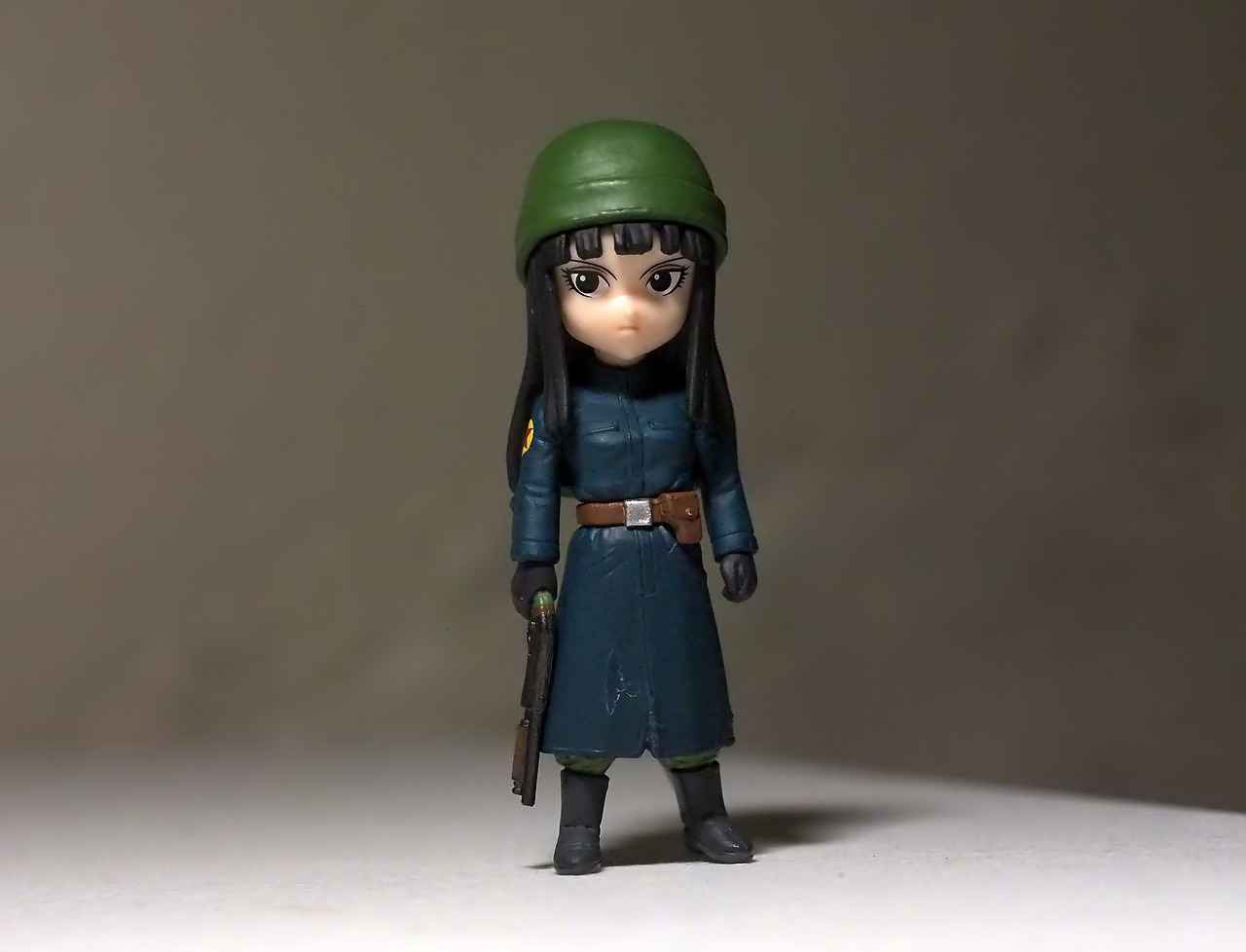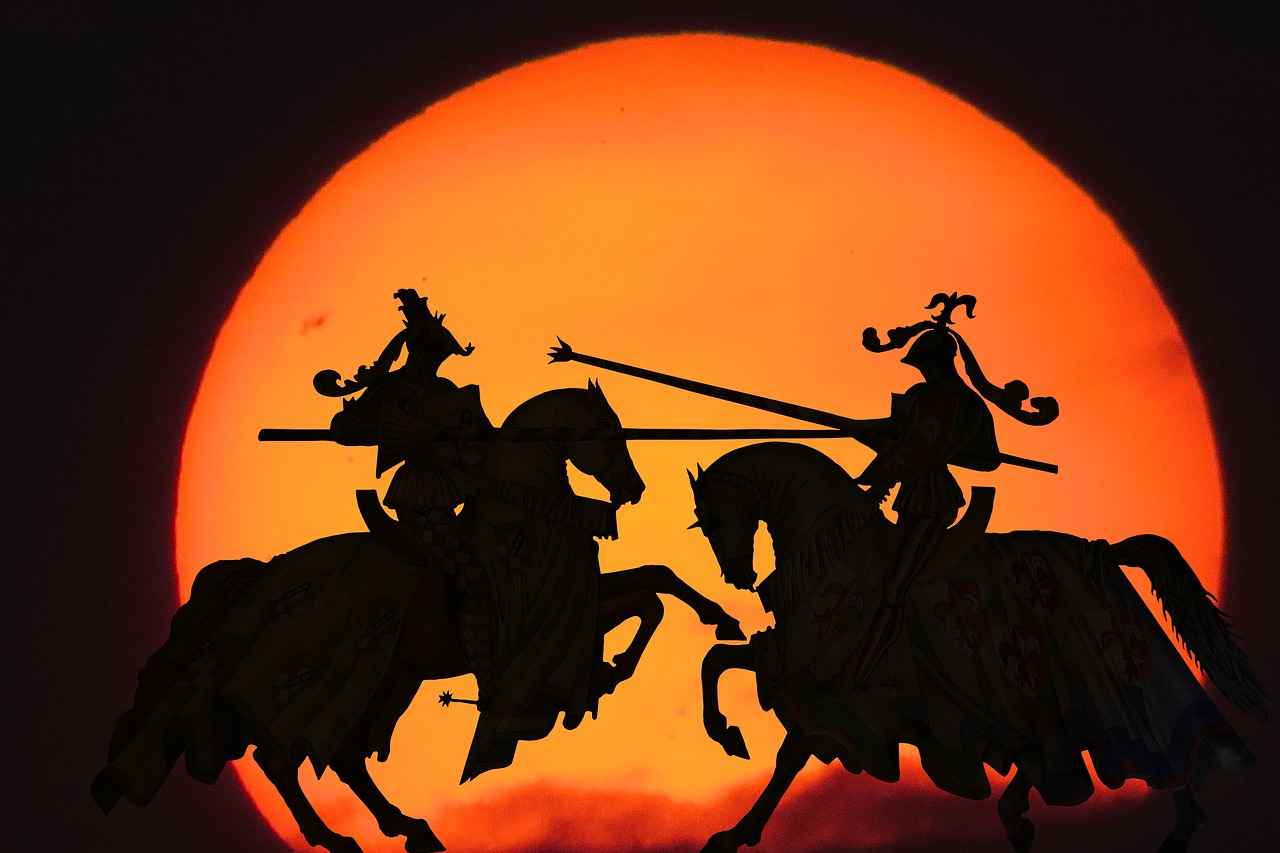This article delves into the most unforgettable final battles in anime, exploring their significance, character development, and the emotional impact they had on audiences worldwide.
Unforgettable Showdowns: A Closer Look
Final battles often serve as climactic moments in anime, showcasing the culmination of character growth and plot development. These showdowns are not merely about physical confrontations; they encapsulate the essence of the characters involved and their journeys. Iconic examples include the epic clash between Goku and Frieza in “Dragon Ball Z,” which not only showcased incredible power but also marked a pivotal moment in Goku’s transformation into a hero.
Character Development Through Conflict
Final battles are pivotal for character arcs, often revealing true motivations and growth. In series like “Naruto,” the final fight between Naruto and Sasuke not only resolves their long-standing rivalry but also highlights their individual growth throughout the series. Such confrontations enhance the overall narrative, providing depth to both protagonists and antagonists alike.
Transformations and Power Ups
Many final battles feature dramatic transformations or power-ups that significantly impact the fight. In “One Piece,” for instance, Luffy’s Gear Fourth transformation not only elevates his combat abilities but also symbolizes his determination and resolve to protect his friends.
The Role of Sacrifice
Sacrifice often plays a critical role in final battles, amplifying the stakes. Key moments, such as Hinata’s sacrifice in “Naruto,” leave a lasting impact on the audience and highlight the themes of friendship and loyalty.
Emotional Resonance: The Heart of the Battle
The emotional weight of final battles resonates deeply with viewers. These moments evoke feelings of joy, sadness, and nostalgia, enhancing the overall viewing experience. The soundtrack and visuals during these climactic moments serve to elevate the emotional stakes, making them unforgettable.
Fan Reactions and Cultural Impact
Final battles often spark intense discussions among fans, reflecting their cultural impact. They resonate with audiences across different demographics, becoming a shared experience that transcends language and borders.
In conclusion, the final battles in anime are not just about victory or defeat; they encapsulate the essence of the characters and the narratives they inhabit. These climactic moments leave an indelible mark on the hearts of viewers, ensuring that they remain etched in the annals of anime history.

Unforgettable Showdowns: A Closer Look
Final battles in anime are not just mere confrontations; they are the culmination of intricate storytelling and character evolution. These climactic moments encapsulate the essence of the series, often leaving a lasting impression on viewers. Let’s explore some of the most unforgettable showdowns that have defined the anime landscape.
- Dragon Ball Z: Goku vs. Frieza – This iconic battle on Namek is a testament to the power of determination and transformation. Goku’s journey from a naive warrior to a formidable Super Saiyan showcases profound character development.
- Naruto: Naruto vs. Sasuke – The emotional weight of this battle is immense, symbolizing friendship, rivalry, and the struggle for redemption. Their final confrontation is the culmination of years of growth and conflict.
- Attack on Titan: Eren Yeager vs. Reiner Braun – This battle highlights the complexities of loyalty and betrayal, showcasing how character motivations can shift dramatically throughout the series.
- My Hero Academia: Deku vs. Shigaraki – A clash that emphasizes the theme of legacy, this showdown not only tests their powers but also their ideologies, making it a pivotal moment in the series.
These confrontations do more than entertain; they act as mirrors reflecting the characters’ journeys, making them relatable and impactful. Each battle is meticulously crafted, ensuring that they resonate with the audience long after the credits roll.
The significance of these showdowns lies in their ability to evoke a range of emotions, from joy to heartbreak. Fans remember these moments not just for the action, but for the narrative depth and character arcs that they encapsulate.
In conclusion, unforgettable showdowns in anime are a vital component of storytelling, serving as the ultimate test for characters and leaving a profound impact on viewers. They remind us of the power of growth, conflict, and resolution in the journey of life.

Character Development Through Conflict
is a fundamental aspect of storytelling, particularly in anime, where the final battles often serve as a crucible for transformation. These climactic confrontations not only resolve long-standing plot threads but also reveal the true motivations and emotional growth of characters. In this section, we will explore how these intense moments shape both protagonists and antagonists, ultimately enhancing the narrative.
Final battles are not merely physical confrontations; they are emotional and psychological showdowns that challenge characters to confront their fears, desires, and past mistakes. For instance, a hero may face their greatest enemy, not just in terms of strength, but also in confronting the ideologies and beliefs that have shaped their journey. This process often leads to significant character growth, as they must reconcile their past with their present.
On the flip side, antagonists often experience a similar arc. As their motivations are unveiled, viewers gain insight into what drives them, making them more relatable. This duality of character development enriches the story, allowing audiences to empathize with both sides of the conflict. The complexity of these characters adds depth to the narrative, turning what could be a simple battle into a profound exploration of morality and choice.
Moreover, the stakes in these final showdowns are often heightened by the emotional investment that viewers have in the characters. The outcome of these battles can lead to redemption or downfall, making every moment crucial. As characters face their ultimate tests, they often reveal their true selves, leading to memorable and impactful resolutions.
In conclusion, final battles are pivotal moments that encapsulate the essence of character development through conflict. They provide a platform for characters to evolve, confront their inner demons, and ultimately shape the narrative in ways that resonate deeply with audiences.
Transformations and Power Ups
are pivotal elements in many final battles, particularly in the world of anime. These dramatic changes not only elevate the intensity of the fight but also significantly affect the characters involved, adding intricate layers to the storytelling. As characters undergo these transformations, they often reveal deeper aspects of their personalities, motivations, and resolve.
One of the most compelling aspects of these transformations is how they symbolize a character’s journey. For instance, when a protagonist taps into a hidden power, it often reflects their growth and the struggles they have faced throughout the series. This transformation serves as a metaphor for overcoming personal challenges, making the final battle not just a physical confrontation but also a representation of their internal battles.
Moreover, the introduction of power-ups can shift the dynamics of the fight, creating tension and excitement. Audiences are often left on the edge of their seats, wondering how these newfound abilities will influence the outcome. For example, in many anime, a character may unlock a powerful form just when all hope seems lost, turning the tide of battle in a dramatic fashion.
These moments are not just about flashy visuals or heightened abilities; they often come with significant emotional weight. Characters may struggle with the implications of their transformations, questioning whether they are losing part of themselves or if they can control their newfound powers. This internal conflict adds depth to the narrative and allows viewers to connect with the characters on a more profound level.
In conclusion, transformations and power-ups in final battles serve as crucial storytelling devices that enhance character development and elevate the stakes. They transform not only the fight itself but also the characters involved, making these moments memorable and impactful in the realm of anime.
Iconic Transformations in Anime
have become a hallmark of storytelling, representing not only a character’s resolve but also their growth throughout the series. These moments often signify a turning point in the narrative, where characters push beyond their limits to face formidable challenges. Below, we explore some of the most memorable transformations in anime history, their significance, and the impact they have on viewers.
- Goku’s Super Saiyan Transformation: Perhaps one of the most iconic moments in anime, Goku’s transformation into a Super Saiyan during his battle with Frieza in Dragon Ball Z symbolizes the culmination of his training and determination. This transformation not only enhances his power but also represents his emotional journey, as he fights for his friends and the universe.
- Naruto’s Sage Mode: In Naruto, Naruto Uzumaki’s transition into Sage Mode showcases his growth from a reckless child to a mature ninja. This transformation allows him to tap into natural energy, enhancing his abilities and marking a critical moment in his quest to protect his village.
- Ichigo’s Bankai: In Bleach, Ichigo Kurosaki’s attainment of Bankai during his fight with Byakuya Kuchiki signifies his evolution as a Soul Reaper. This powerful transformation not only boosts his strength but also reflects his resolve to protect those he cares about.
- Edward Elric’s Transmutation: In Fullmetal Alchemist, Edward Elric’s use of alchemy during pivotal moments showcases his growth and determination. His transformations often come at great personal cost, emphasizing the themes of sacrifice and redemption.
These transformations are not mere power-ups; they are deeply woven into the characters’ narratives, reflecting their struggles, aspirations, and the stakes involved in their battles. The emotional weight of these moments resonates with audiences, making them unforgettable highlights in the world of anime.
As viewers, we are drawn to these transformations not just for their visual spectacle but for the stories they tell about courage, determination, and the human spirit. They remind us that true strength often comes from within.
The Role of Sacrifice
in final battles is a theme that resonates deeply within the world of anime. These moments not only elevate the stakes but also serve as pivotal points for character development and emotional resonance. In this section, we will explore several key instances where characters made the ultimate sacrifice for the greater good, leaving a profound impact on their stories and audiences alike.
One of the most iconic examples is from “Naruto,” where Minato Namikaze, the Fourth Hokage, sacrifices his life to save the village from the Nine-Tails attack. His selfless act not only protects countless lives but also sets the stage for Naruto’s journey, symbolizing hope and resilience.
Similarly, in “Attack on Titan,” characters like Armin Arlert and Erwin Smith demonstrate the essence of sacrifice. During the climactic battle against the Titans, both characters put their lives on the line for their comrades, showcasing the weight of their choices and the impact on their fellow soldiers. These sacrifices are not just physical; they represent the emotional and psychological burdens carried by the characters.
Another poignant moment occurs in “Fullmetal Alchemist: Brotherhood,” where Maes Hughes sacrifices himself in the fight against corruption. His death serves as a catalyst for the Elric brothers, pushing them to confront the truth and fight for justice. The emotional fallout from his sacrifice reverberates throughout the series, highlighting the cost of war and the importance of camaraderie.
In conclusion, the theme of sacrifice in final battles is a powerful narrative device that enriches storytelling in anime. It not only amplifies the stakes but also deepens character arcs, making these moments unforgettable for viewers. By examining these sacrifices, we gain insight into the values of heroism, love, and the complexities of human nature.
Strategic Elements of Final Battles
In the realm of anime, final battles are not just mere displays of strength; they are intricate strategic confrontations that reveal the depth of a character’s intellect and skills. These climactic moments often hinge on carefully crafted plans and tactics, showcasing how characters leverage their abilities to outmaneuver their opponents.
One of the most compelling aspects of these battles is the use of deception. Characters often employ tactics such as feints, misdirection, and psychological warfare to gain the upper hand. For instance, a protagonist might deliberately expose a weakness, only to turn the tables when their opponent takes the bait, demonstrating not only their combat prowess but also their cunning.
Team dynamics also play a crucial role in strategic battles. Many final showdowns involve multiple characters working in tandem, each contributing unique skills to formulate a cohesive strategy. This collaboration often highlights the importance of trust and synergy, as characters must rely on one another to execute their plans effectively. The interplay between individual strengths and collective strategy adds layers to the conflict, making it more engaging for viewers.
Furthermore, the environment in which these battles take place can significantly influence strategy. Characters often utilize the terrain to their advantage, employing tactics that capitalize on their surroundings. For example, using elevated positions to gain a better vantage point or employing natural obstacles as shields can turn the tide of battle.
Ultimately, the strategic elements of final battles enrich the narrative, transforming what could be a simple clash of power into a complex game of wits. This depth not only elevates the stakes but also enhances the emotional investment of the audience, making these moments truly unforgettable.

Emotional Resonance: The Heart of the Battle
The emotional weight of final battles resonates deeply with viewers. These climactic moments are not merely about the physical confrontations; they encapsulate a spectrum of emotions that enhance the overall viewing experience. As audiences witness the culmination of character journeys, they are often swept up in a whirlwind of joy, sadness, and nostalgia.
Final battles serve as a cathartic release for viewers who have invested time in the characters and their stories. The stakes are incredibly high, and the tension is palpable, making the outcomes all the more impactful. When a beloved character faces their ultimate challenge, the audience feels every punch, every moment of doubt, and every triumph alongside them. This shared experience fosters a deep emotional connection, turning mere spectators into passionate supporters.
Moreover, these battles often evoke nostalgic memories of earlier episodes, reminding viewers of how far the characters have come. The sense of closure that accompanies a final showdown can be profoundly moving, as it encapsulates the essence of the character’s journey. Viewers reminisce about past struggles and victories, creating a rich tapestry of emotions that heightens the impact of the finale.
Additionally, the use of music and visuals plays a crucial role in amplifying these emotional responses. A well-composed soundtrack can elevate the tension and drama, while stunning animation captures the intensity of the fight, making every moment feel monumental. Together, these elements work harmoniously to create a memorable experience that resonates long after the credits roll.
In conclusion, the emotional resonance of final battles is a vital aspect of storytelling in anime. These moments not only signify the end of a conflict but also encapsulate the growth and evolution of characters, leaving a lasting impression on the audience.
Soundtrack and Visuals
In the realm of anime, the final battles are often the pinnacle of emotional storytelling, and two key elements that elevate these moments are music and visuals. The combination of a powerful soundtrack and stunning animation can transform a climactic showdown into an unforgettable experience. This section delves into how these elements contribute to the overall emotional impact of these epic confrontations.
The soundtrack plays a crucial role in setting the tone during final battles. Composers often create scores that reflect the gravity of the situation, using crescendos and dynamic shifts to evoke feelings of tension and excitement. For instance, in the iconic battle scenes of “Attack on Titan,” the orchestral pieces amplify the stakes, making viewers feel the weight of every clash. The use of instrumentation, such as strings and brass, can convey urgency and despair, resonating deeply with the audience.
Moreover, the animation style significantly enhances the storytelling. The fluidity of movement, coupled with vibrant colors and dramatic effects, creates a visual spectacle that captivates viewers. In series like “My Hero Academia,” the animation during final battles is meticulously crafted to highlight each character’s unique abilities, making the fight sequences not just a display of power but also a reflection of their growth and struggles. The visual representation of energy blasts, transformations, and emotional expressions adds layers to the narrative, making each moment feel impactful.
Additionally, the synergy between music and visuals is paramount. When a heart-pounding score aligns with breathtaking animation, it creates a multi-sensory experience that resonates with viewers long after the credits roll. This combination is evident in classics like “Naruto” and “Dragon Ball Z,” where the emotional weight of the battles is magnified by the perfect blend of sound and imagery.
In conclusion, the role of soundtracks and visuals in anime’s final battles cannot be overstated. They not only enhance the viewing experience but also deepen the emotional connection between the characters and the audience. As fans, we are left with lasting memories of these epic confrontations, all thanks to the powerful interplay of sound and sight.
Fan Reactions and Cultural Impact
Final battles in anime are not just mere confrontations; they ignite intense discussions among fans, often leading to a rich tapestry of interpretations and insights. These climactic moments resonate deeply, transcending age groups and cultural backgrounds, and creating a shared experience among viewers.
One of the most fascinating aspects of these battles is how they serve as a cultural touchstone. Fans from different demographics often come together to discuss their interpretations of the events, the motivations of characters, and the overall messages conveyed. For instance, the final showdown in Attack on Titan sparked debates about freedom and sacrifice, while the climactic battle in Naruto highlighted themes of friendship and redemption.
Moreover, social media platforms play a significant role in amplifying these discussions. Hashtags and fan forums allow viewers to share their thoughts, theories, and artwork inspired by these epic showdowns. This level of engagement fosters a sense of community, where fans feel connected not just to the anime, but to each other. As a result, final battles often become a cultural phenomenon, influencing everything from memes to merchandise.
| Anime Title | Final Battle Theme | Fan Discussion Highlights |
|---|---|---|
| Attack on Titan | Freedom vs. Oppression | Debates on morality and the cost of freedom |
| Naruto | Friendship and Redemption | Analysis of character growth and relationships |
| Dragon Ball Z | Power and Sacrifice | Impact of transformations on character arcs |
In conclusion, the cultural impact of final battles extends far beyond the screen. They evoke emotional responses and foster a sense of unity among fans, making them an integral part of the anime experience. As discussions continue to evolve, these moments will undoubtedly remain a focal point for both new and long-time viewers.
